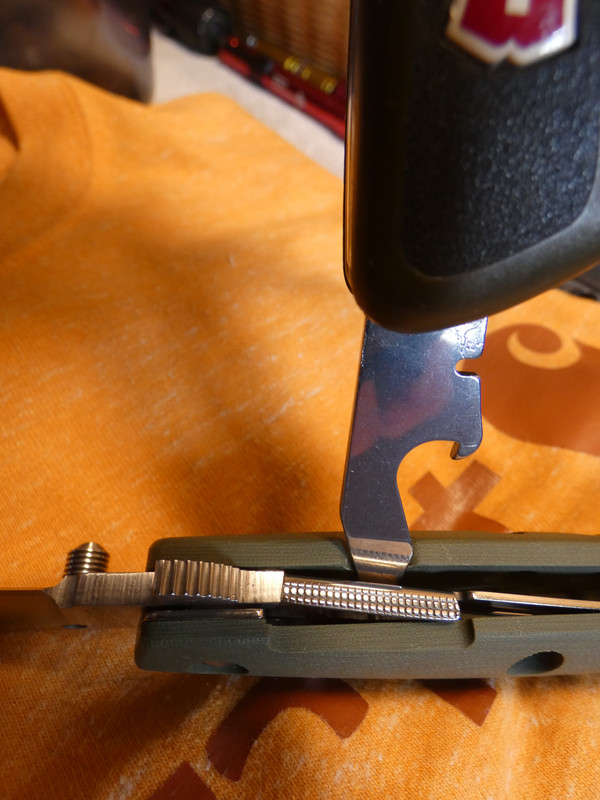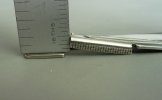I've had seventeen Ti-lite 6's in my possession, and I've worked on all of them. Here's something I've learned- Sometimes the lock is bent over a lot farther than it needs to be, and this causes the lock to jamb against the tang a lot harder than is required for a secure lock-up.
Another issue that this can cause is that even when the lock doesn't stick it can make the lock difficult to unlock just from the amount of force necessary to push the lock away, the slipperiness of the locks surface, and the small notch in the handle/liner. It can be a real thumb-buster.
My solution is to carefully bend the lock back (this requires complete disassembly of the knife). I do this by securing the liner in a vise (masking tape or a piece of leather to protect the liner from scratches), with the lock portion above the top of the vise jaws, bend it back, measure, bend, measure, etc. until I get it just right.
In this pic you can see how far the lock extends from the rest of the liner on this particular knife (before adjustment), 1/4", but there is just slightly less than 3/16ths" of space between the two liners of the knife, and the ball detent won't allow the lock to travel the full distance, so that basically reduces the distance even more. So 1/4" of travel is more than is necessary. On a few occasions the lock stuck out 5/16ths".
I like to bend them until they are somewhere between 1/8" and 3/16ths". Maybe try 3/16ths" and see how that works.
The locks are hardened stainless steel, and they can take a good amount of bending without being negatively affected by it. So if you bend it too far, you can bend it back. But of course there are limits.
Before I figured all this out I used to use a thick piece of kydex to break the lock free (and I really mean
break). I have performed this adjustment on several Ti-lite 6's and have always had great results.
Anyways, that's my experience with Ti-lite 6's and lock-stick. I can't say for certain if that's your issue. It is also possible that the lock and tang just need to "mate", and wear in together. But if you measure the lock like I have below, and it's 1/4" to 5/16ths", then it might well be just what I described above. Good luck.
View attachment 2777745



